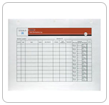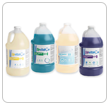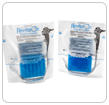FAQs
Where can I confirm if my medical device is compatible with Revital-Ox RESERT High Level Disinfectant - Chemosterilant?
Identify semi-critical medical devices and accessories that have been tested to confirm materials compatibility with Revital-Ox RESERT High Level Disinfection - Chemosterilant using the Device Compatibility Matrix.
What should I do if my medical device is not listed on the Revital-Ox RESERT High Level Disinfectant Device Compatibility Matrix?
If a medical device is not listed on the Device Compatibility Matrix, reference the Revital-Ox RESERT High Level Disinfectant - Chemosterilant Technical Data Monograph (p. 8) for additional material compatibility information. Then, consult the medical device manufacturer to obtain additional information about the medical device material(s) in question.
Does STERIS sell a soaking bin?
STERIS sells two soaking bin systems: The Revital-Ox Flexible Container System (2D94Q0) and Revital-Ox Rigid Container System (2D93Q0).
What is the difference between Aldehyde-based HLDs and Oxidative HLDs?
| Aldehyde-based HLDs |
Oxidative HLDs such as Revital-Ox RESERT High Level Disinfectant - Chemosterilant |
| Aldehyde-based high level disinfectants have the tendency to fixate organic soils onto medical device surfaces (1, 2) |
Oxidative high level disinfectants do not fixate organic soils onto medical device surfaces (1, 2) |
| Research has shown that aldehyde-based HLDs have resistance to certain microorganisms (3, 4) |
Oxidative high level disinfectants have no known resistance to microorganisms3 |
| Multiple rinses are required after soaking contact time |
1 rinse for a minimum of 1 minute unless longer time is specified by the instrument manufacturer* |
*Always follow the HLD manufacturer’s instructions for use, rinsing instructions referenced are for Revital-Ox RESERT High Level Disinfectant
1 Pineau, et al., Comparison of fixative properties of five disinfectant solutions. Journal of Hospital Infection (2008)
2 Meyers, et al., Letter to the Editor Advantage of pH-neutral peracetic acid over peracetic acid in reduction of viable count of biofilm / Journal of Hospital Infection Available online December 2019
3 Burgess, W., Margolis, A., Gibbs, S., et al., (2017), Disinfectant susceptibility profiling glutaraldehyde-resistant nontuberculous. mycobacteria. Infection Control & Hospital Epidemiology. p.1-8
4 Fisher, W., Fiorello, A., Shaffer., D., (2012) Aldehyde-resistent mycobacteria bacteria associated with use of endoscope reprocessing systems. American Journal of Infection Control. p 1-3.
 United States
United States
 Canada (EN)
Canada (EN) Canada (FR)
Canada (FR) United Kingdom
United Kingdom Australia
Australia Brasil
Brasil México
México






